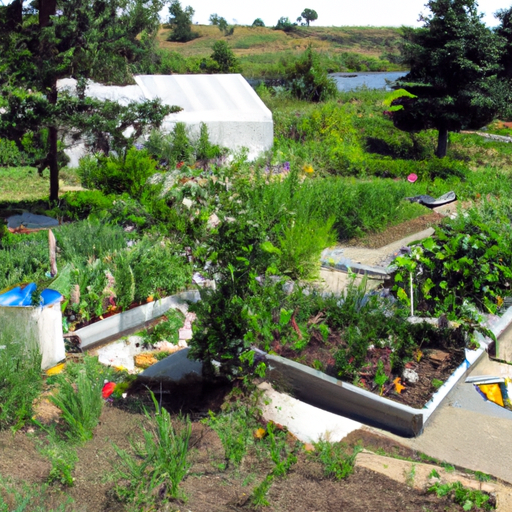Food deserts are areas where people have limited access to affordable and nutritious food. This lack of access leads to poor dietary choices and increased risk of chronic disease. Identifying and mapping food deserts is essential to solving the problem, and initiatives such as farmers’ markets and mobile food markets aim to provide healthier options. Success stories include urban agriculture projects in Detroit and the Philadelphia Food Access Collaborative.
In today’s world, access to fresh and nutritious food is often taken for granted. However, for millions of people around the world, this basic need is not easily attainable. These areas, known as food deserts, are characterized by limited access to affordable and healthy food. In this article, we delve into the definition and causes of food deserts, exploring their detrimental effects on health and nutrition. In addition, we will discuss the methods used to identify and map these food deserts, providing insight into the initiatives and strategies that have been developed to combat the problem. Finally, we will highlight success stories and lessons learned from communities that have successfully overcome food deserts, offering hope for a healthier and more just future.
- 1. Understanding Food Deserts: Definition and Causes
- 2. Impact of food deserts on health and nutrition
- 3. Identifying food deserts: mapping and measuring availability
- 4. Exploring solutions: initiatives and strategies to combat food deserts
- 5. Overcoming food deserts: success stories and lessons learned
1. Understanding Food Deserts: Definition and Causes

Understanding Food Deserts: Definitions and Causes
In recent years, the term “food desert” has attracted considerable attention in discussions surrounding food security and public health. A food desert refers to a geographic area where residents have limited access to affordable and nutritious food. These areas are usually in urban areas or rural areas, often affecting low-income communities.
A defining characteristic of a food desert is the lack of grocery stores, supermarkets, or other retailers that offer fresh fruits, vegetables, whole grains, and other healthy foods within a reasonable distance. Instead, residents have limited options such as convenience stores, fast food chains, and small corner stores that mostly sell processed and unhealthy foods. This limited access to nutritious food can have serious consequences for the health and well-being of people living in these areas.
Several factors contribute to the emergence and maintenance of food deserts. One of the main reasons is economic inequality in certain areas or regions. Low-income communities often find it difficult to attract large supermarkets or
2. Impact of food deserts on health and nutrition

Food deserts have a significant impact on the health and nutrition of people living in these areas. Limited access to fresh, healthy and affordable food often leads to poor dietary choices and increased risk of chronic disease.
One of the main consequences of food deserts is the lack of access to fresh fruits and vegetables. These nutritious foods contain essential vitamins, minerals and fiber that are critical to maintaining good health. However, without access to these items, people living in food deserts are more likely to rely on processed and unhealthy foods. These options tend to be high in calories, unhealthy fats, and added sugar, which can contribute to weight gain, obesity, and related health problems like diabetes and heart disease.
In addition, the lack of grocery stores and farmers markets in food deserts forces residents to depend on convenience stores or fast food restaurants. These establishments mostly offer highly processed ready-to-eat meals that are often low in nutritional value and high in sodium, preservatives and artificial additives.
3. Identifying food deserts: mapping and measuring availability

In order to effectively address food deserts, it is critical to first accurately identify and map these areas. Mapping and measuring the availability of healthy and affordable food options helps to understand the extent and severity of food deserts in a community or region.
One way to identify food deserts is to analyze the geographic distribution of grocery stores, supermarkets, and farmers markets. By depicting these food sources, it becomes apparent whether certain areas lack access to these facilities. The absence or limited presence of such food retailers in a given area means a potential food desert.
Additionally, measuring the distance and transportation barriers between communities and food sources is another approach to defining food deserts. This can be done by estimating the average distance people have to travel to get to a grocery store or supermarket. If the distance is very long or if there is no reliable means of transportation, this indicates limited access to fresh and healthy food.
Additionally, assessing socioeconomic factors in a community can help determine the presence of a food desert. Low
4. Exploring solutions: initiatives and strategies to combat food deserts

In order to combat the problem of food deserts, various initiatives and strategies have been implemented to ensure that people living in these areas have access to healthy and affordable food. These solutions aim to address the lack of grocery stores or supermarkets by providing people with alternative ways to obtain fresh produce and other nutritious food.
One common approach is to establish farmers markets in food desert areas. Farmers markets bring fresh fruits, vegetables and other locally produced goods directly to the community. These markets provide residents with a convenient and affordable way to access healthy food. In addition, farmers markets often accept government assistance programs such as SNAP (Supplemental Nutrition Assistance Program) and WIC (Women, Infants and Children), making it easier for low-income people to purchase fresh produce.
Another strategy is the introduction of mobile food markets or food trucks. These initiatives deliver nutritious food directly to areas without access to grocery stores. Mobile food markets often operate on a regular schedule, visiting different areas throughout the week.
5. Overcoming food deserts: success stories and lessons learned

Food deserts are areas where access to fresh, healthy and affordable food is limited or non-existent. While the existence of food deserts poses significant challenges for communities, there are success stories and valuable lessons learned in overcoming the problem.
One notable success story is a community initiative in Detroit, Michigan. Faced with the prevalence of food deserts, residents have taken matters into their own hands and started urban farming projects. They turned vacant lots into productive gardens and created community-led farmers markets. This not only increased access to fresh produce, but also empowered the community to take control of their food system. Detroit’s success in urban agriculture has inspired similar initiatives in other cities across the United States.
Another success story came from the city of Philadelphia, Pennsylvania. The Philadelphia Food Access Collaborative, a coalition of organizations, government agencies and community members, has come together to address food deserts in the city. They implemented strategies such as setting up corner stores as health food retailers, providing financial incentives
In summary, food deserts are an important problem that affects communities around the world. In these regions, there is no access to affordable nutritious food, which negatively affects health and nutrition. By mapping and measuring availability, we can more effectively identify and address these food deserts. Initiatives and strategies such as community gardens, mobile markets and policy changes have shown promising results in combating food deserts. Success stories and lessons learned from different locations provide valuable information and inspiration for future endeavors. It is imperative that individuals, communities and governments work together to overcome food deserts and ensure everyone has access to healthy and affordable food. Only by solving this problem can we improve the overall health and well-being of communities and contribute to food justice for all.
 Purex find
Purex find